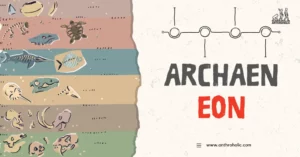AI Answer Evaluation Platform Live Now. Try Free Answer Evaluation Now
Anthropoidea
Formerly classified as anthropoids or anthropoid apes, the New World monkey, Old World monkey, and apes, including humans, made up the taxonomic suborder Anthropoidea. Tarsiers and other members of this group are now included in the suborder Haplorhini.

Anthropoidea is an infraorder under the order Primates that consists of monkeys, apes, and humans. It is one of the key subjects of study in primatology, a subfield of physical anthropology. This branch of anthropology focuses on the behavior, physiology, and morphology of primates to better understand the human species’ evolution and biology. This article delves into Anthropoidea from a primatological perspective.
Origin and Evolution of Anthropoidea
Early Beginnings
The earliest Anthropoidea is believed to have emerged around 40 million years ago, during the middle Eocene epoch. They evolved from earlier primates known as prosimians, which included lemurs and tarsiers. This was a significant evolutionary leap, involving a shift from a nocturnal to a diurnal lifestyle, an increased brain size, and changes in diet [1].
Development and Spread
Over millions of years, Anthropoidea diversified and spread. Fossil evidence suggests that the first monkeys and apes emerged in Africa and Asia during the Oligocene epoch (34 to 23 million years ago). By the Miocene epoch (23 to 5 million years ago), many modern groups had appeared, including Old World monkeys, apes, and, eventually, the earliest hominins [1].
Major Groups of Anthropoidea
There are two primary groups of Anthropoidea: Platyrrhini (New World Monkeys) and Catarrhini (Old World Monkeys, apes, and humans).
- Platyrrhini (New World Monkeys): These are indigenous to Central and South America. Characterized by a broad, flat nose and a long, prehensile tail, these monkeys are adept climbers. Examples include capuchins and spider monkeys [2].
- Catarrhini (Old World Monkeys, Apes, and Humans): Catarrhini split into two families: Cercopithecidae (Old World Monkeys) and Hominoidea (apes and humans). These species possess a downward-facing nostril and typically lack a prehensile tail. Examples include baboons, macaques, orangutans, and humans [2].
The table below summarizes some key characteristics of these two groups:
| Group | Geographic Distribution | Nasal Structure | Tail | Example Species |
|---|---|---|---|---|
| Platyrrhini | Central and South America | Broad, flat nose | Long, prehensile tail | Capuchins, Spider monkeys |
| Catarrhini | Africa, Asia, Europe | Downward-facing nostril | Typically lack prehensile tail | Baboons, Macaques, Orangutans, Humans |
Anthropoidea and Human Evolution
The evolution of Anthropoidea has significant implications for understanding human evolution. It is in this group that many of the characteristics that define humans – such as increased brain size, advanced social structures, and the use of tools – first emerged. By studying Anthropoidea, we can gain insights into the selective pressures and evolutionary pathways that led to the rise of Homo sapiens.
Behavioral and Cognitive Complexity
Many Anthropoidea display high levels of behavioral and cognitive complexity. They live in diverse social groups, exhibit complex communication behaviors, and some can use tools. These traits offer insights into the evolution of human cognition, sociality, and culture [3].
Anatomical Adaptations
The skeletal structure of Anthropoidea exhibits several adaptations beneficial to arboreal lifestyles, such as grasping hands and feet. Studying these morphological changes can provide valuable clues about the evolutionary pressures that shaped our species and the pathway from tree-dwelling to bipedal locomotion [4].
Conclusion
Anthropoidea, spanning monkeys, apes, and humans, represent a fascinating and informative focus in primatology. The study of these creatures illuminates the pathways of human evolution, offering a deeper understanding of our species’ origin and the factors that have shaped us. By continuing to uncover the secrets of Anthropoidea, we are, in essence, learning more about ourselves.
References
[1] Fleagle, J.G. (2013). “Primate Adaptation and Evolution (Third Edition)”. Academic Press.
[2] Campbell, N.A., Reece, J.B., Urry, L.A., Cain, M.L., Wasserman, S.A., Minorsky, P.V., & Jackson, R.B. (2008). “Biology (Eighth Edition)”. Pearson Benjamin Cummings.
[3] Shettleworth, S.J. (2010). “Cognition, Evolution, and Behavior (Second Edition)”. Oxford University Press.
[4] Ward, C.V., & Hammond, A.S. (2016). “The Anthropoid Postcranial axial skeleton: comments on development, variation, and evolution”. Journal of Experimental Zoology Part B: Molecular and Developmental Evolution, 326(7), 293–313.



